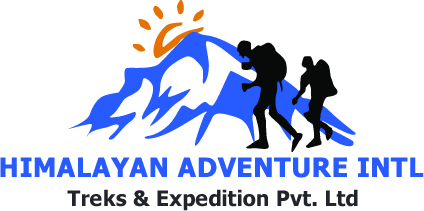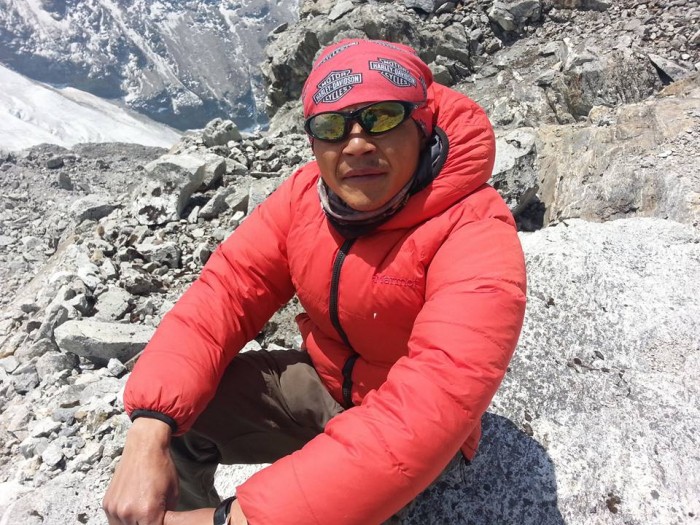The Dhaulagiri Circuit Trek is one of Nepal's most thrilling and off-the-beaten-path trekking adventures. Taking you around the world's seventh-highest mountain, Dhaulagiri (8,167 meters), this trek is for seasoned trekkers seeking high-altitude challenge, wilderness, and stunning scenery. From snow-covered passes like the French Pass Dhaulagiri to remote Dhaulagiri Base Camp, this trek is a test of endurance and a reward of surreal beauty.
In this comprehensive guide by Himalayan Adventure International Treks, we’ll walk you through every aspect of the trek: from Dhaulagiri Circuit Trek map, itinerary, costs (guide, porter, food, accommodation, permits, transportation), best season, AMS sickness prevention, and packing list.
About Dhaulagiri Circuit Trek
-
Duration: 15–21 days
-
Maximum Altitude: 5,360 m (French Pass)
-
Difficulty: Challenging
-
Trekking Style: Camping (mostly), partly teahouse
-
Starting Point: Beni or Darbang
-
Ending Point: Jomsom
-
Best Season: Spring (March-May) & Autumn (September-November)
-
Highlights: Dhaulagiri Base Camp, Hidden Valley, French Pass, Dhampus Pass
Dhaulagiri Circuit Trek Map and Route
The Dhaulagiri Circuit Trek map covers remote terrain west of the Annapurna Circuit Trek and east of the Dolpo region. The trek begins in Beni, follows the Myagdi Khola River, ascends to Italian Base Camp, Dhaulagiri Base Camp, crosses the challenging French Pass and Dhampus Pass, and descends to Jomsom.
Dhaulagiri Round Trek Map Includes:
-
Beni – Darbang – Muri – Boghara
-
Dobang – Italian Base Camp – Dhaulagiri Base Camp
-
French Pass – Hidden Valley – Dhampus Pass
-
Yak Kharka – Marpha – Jomsom
You can request a detailed Dhaulagiri Round Trek map from Himalayan Adventure International Treks, which includes campsites, altitudes, and pass crossings.
Detailed Dhaulagiri Circuit Trek Itinerary
Standard 13-Day Dhaulagiri Circuit Itinerary:
Day 1: Drive from Pokhara to Beni (850 m)
Day 2: Drive to Boghara (2,080 m)
Day 3: Trek to Dobang (2,520 m)
Day 4: Trek to Choriban Khola (3,110 m)
Day 5: Trek to Italian Base Camp (3,660 m)
Day 6: Acclimatization at Italian Base Camp
Day 7: Trek to Glacier Camp (4,210 m)
Day 8: Trek to Dhaulagiri Base Camp (4,740 m)
Day 9: Cross French Pass (5,360 m) to Hidden Valley (5,200 m)
Day 11: Cross Dhampus Pass (5,240 m), trek to Yak Kharka
Day 12: Trek to Marpha (2,670 m)
Day 13: Drive to Pokhara
Shorter and longer Dhaulagiri trek itinerary options can be customized for solo, couple, or group travelers.
Dhaulagiri Base Camp Trek Highlights
The Dhaulagiri Base Camp Trek forms the core of the circuit. Set at 4,740 meters, the base camp provides jaw-dropping views of Dhaulagiri I, II, III, and V. You’ll camp amid glaciers, crevasses, and towering icy cliffs.
Cost Breakdown: Dhaulagiri Circuit Trek Solo, Couple, or Group Join
Whether you're trekking solo, as a couple, or joining a group, cost varies based on services.
Dhaulagiri Circuit Trek Cost Overview:
| Type |
Cost (Approx. USD) |
| Solo Trek (fully supported) |
$1,700 – $1,900 |
| Couple Trek (per person) |
$1,900 – $2,000 |
| Group Join Trek (4-10 pax) |
$1,600 – $2,000 |
| Dhaulagiri Circuit Camping Trek Cost |
$1900–$2400 extra |
Note: This includes permits, guide & porter, transport, food, camping gear, and logistics.
Guide and Porter Cost
For remote routes like Dhaulagiri, hiring experienced staff is vital.
Himalayan Adventure International Treks provides licensed and acclimatized staff trained in high-altitude rescue.
Permit Costs for Dhaulagiri Circuit Trek
No restricted area permits are required, but you need:
| Permit Type |
Cost (USD) |
| Annapurna Conservation Area Permit (ACAP) |
$30 |
| TIMS Card (Trekkers' Info Management) |
$20 (Group) |
Dhaulagiri Round Trek Permit Cost is typically $60 per person in total.
Transportation Cost
-
Pokhara to Beni (private jeep): $90–$100 (divided among group)
-
Beni to Boghara: Jeep $140-$170
-
Beni by local bus: $10–$15
-
Jomsom to Pokhara (Flight): $187–$200
-
Jomsom to Pokhara (Jeep): $30–$50
Total Dhaulagiri Circuit Trek transportation cost: $50–$200 depending on mode and group size.
Food and Accommodation Cost
As the trek is largely remote, most nights are spent camping.
-
Camping Food (3 meals/day): Included in package
-
Teahouse (lower region): $5–$10 per night
-
Food in Teahouse: $5–$8 per meal
-
Staff Meals: Included in group cost
Food and accommodation cost is bundled into most packages by Himalayan Adventure International Treks, usually $30–$40/day/person.
Best Season for Dhaulagiri Circuit Trek
The best time to do the Dhaulagiri Round Trek is:
Spring (March–May):
-
Clear skies, blooming rhododendrons
-
Stable weather, good visibility
Autumn (September–November):
Avoid monsoon (June–August) due to landslides and leeches, and winter (Dec–Feb) due to heavy snow and pass closures.
AMS (Acute Mountain Sickness) and Prevention
Due to the high passes and base camp elevation, AMS is a real concern.
Prevention Tips:
-
Acclimatize with rest days (e.g., Italian Base Camp, Dhaulagiri Base Camp)
-
Hydrate (3–4 liters/day)
-
Avoid alcohol and smoking
-
Ascend gradually
-
Consider Diamox (with doctor's consultation)
Symptoms include headache, nausea, dizziness, loss of appetite, and fatigue. Trek with a guide trained in AMS sickness prevention and response.
Pokhara to Dhaulagiri Distance
-
Driving Distance: Pokhara to Beni – approx. 80 km (4-5 hours)
-
Trekking Distance: Total circuit – approx. 200 km
-
The Pokhara to Dhaulagiri distance via this route offers progressive altitude gain ideal for acclimatization.
French Pass Dhaulagiri and Dhampus Pass
-
French Pass (5,360 m): A snowy gateway from Dhaulagiri Base Camp into Hidden Valley
-
Dhampus Pass (5,240 m): Leads from Hidden Valley into Marpha
Both are technical high-altitude passes requiring proper gear and fitness. Snow, crevasses, and high winds are common.
Packing List for Dhaulagiri Circuit Trek
Here’s a high-altitude camping trek checklist:
Clothing:
-
Down jacket (-10°C rated)
-
Thermal base layers
-
Fleece layers
-
Waterproof jacket and pants
-
Trekking pants, shirts
-
Woolen hat, sun hat, gloves
Footwear:
Camping & Gear:
-
Sleeping bag (-20°C rated)
-
Headlamp & extra batteries
-
Trekking poles
-
Gaiters, crampons (if snowy)
-
Water purification tablets
-
Duffel bag, day pack
-
Personal toiletries and sunscreen
You can rent/buy gear in Pokhara or Kathmandu before the trek.
Dhaulagiri Circuit Trek vs Other Treks
| Trek |
Highlight |
Difficulty |
Duration |
| Dhaulagiri Circuit |
Remote, passes, glaciers, camping |
Hard |
14 days |
| Manaslu Circuit Trek |
Cultural, Larkya La, tea-house |
Moderate |
14 days |
| Annapurna Circuit Trek |
Thorong La, villages, road access |
Moderate |
12 days |
For pure wilderness and altitude adventure, Dhaulagiri Round Trek is unmatched.
Why Choose Himalayan Adventure International Treks?
-
Decades of experience with high-altitude camping expeditions
-
Trained guides for technical terrain and AMS prevention
-
Customized Dhaulagiri trek itinerary for solo, couple, or groups
-
Quality camping logistics and communication support
-
Competitive group join trek cost options
The Dhaulagiri Circuit Trek is not for the faint-hearted. It challenges your limits and rewards you with some of Nepal’s rawest natural beauty—towering peaks, icy glaciers, remote valleys, and the unmatched solitude of high mountains.
Whether you're planning the trek solo, as a couple, or looking for a group join experience, Himalayan Adventure International Treks offers full-service packages, logistics, guides, permits, and passion for making your Himalayan dream come true.
Book your Dhaulagiri Circuit Trek now with Himalayan Adventure International Treks and step into an unforgettable Himalayan odyssey!

 Plan Your Trip Now
Plan Your Trip Now 



